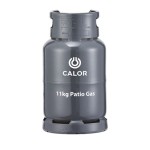Patio Citrus Trees: A Guide to Growing and Caring for Miniature Citrus
Patio citrus trees, also known as dwarf or miniature citrus varieties, offer the opportunity to cultivate fresh, fragrant citrus fruits in limited spaces. Whether located in apartments, balconies, or small gardens, these compact trees bring the beauty and bounty of citrus cultivation to a wider audience. Successful patio citrus cultivation involves understanding specific needs, including soil composition, watering techniques, fertilization schedules, pest management, and appropriate pruning strategies.
Choosing the Right Citrus Variety
The initial and crucial step in patio citrus cultivation is selecting an appropriate variety adaptable to container growing. Several citrus varieties are naturally dwarf or can be grafted onto dwarfing rootstocks, making them suitable for containers. Popular choices often include:
- Meyer Lemon: Known for its sweeter, less acidic flavor, Meyer lemons are relatively cold-hardy and generally thrive in containers.
- Key Lime: This variety produces intensely flavored limes, ideal for culinary applications. Key limes perform well in warm climates and benefit from consistent moisture.
- Calamondin Orange: Often grown as an ornamental, calamondins produce small, tart oranges that are excellent for marmalade and other preserves. They are tolerant of a wide range of conditions.
- Kumquat: These unique citrus fruits have an edible peel and tart pulp. Kumquats are relatively cold-hardy and productive in containers.
- Dwarf Mandarin Oranges: Varieties like 'Tangerine' or 'Satsuma' cultivated on dwarfing rootstocks can provide sweet, easy-to-peel fruits.
When selecting a variety, consideration should be given to the local climate, sunlight exposure, and personal preferences regarding fruit flavor and use. Researching the specific requirements of each variety helps ensure the selection of a citrus tree well-suited for the intended growing environment.
The rootstock also plays a critical role in the tree's overall performance. Dwarfing rootstocks restrict growth, resulting in a smaller tree size, which is essential for container cultivation. Common dwarfing rootstocks like 'Flying Dragon' are frequently used. Inquire about the rootstock at the nursery to ensure it matches the desired size and cold hardiness for the region.
Essential Soil and Container Considerations
The success of patio citrus trees hinges on the quality of the soil and the suitability of the container. Citrus trees require well-draining soil to prevent root rot, a common problem in container gardening. A suitable soil mix typically consists of:
- Potting Mix: A high-quality, peat-based potting mix provides essential nutrients and moisture retention.
- Coarse Sand or Perlite: These amendments improve drainage and aeration, preventing soil compaction.
- Compost: Adding compost enriches the soil with organic matter, providing a slow-release source of nutrients.
Avoid using garden soil, as it tends to compact in containers and does not provide the necessary drainage for citrus trees. A slightly acidic soil pH, ideally between 6.0 and 7.0, is optimal for citrus growth. Soil pH testing kits are readily available and allow for adjustments if necessary.
The container itself should be appropriately sized to accommodate the tree's root system. A container that is too small will restrict growth, while a container that is too large can lead to overwatering. A general guideline is to start with a container that is at least 15-20 gallons in size and repot as the tree grows. The container should have ample drainage holes to allow excess water to escape. Clay pots are a good option because they are porous and allow the soil to breathe, reducing the risk of root rot, but they also dry out faster, requiring more frequent watering. Plastic pots are lighter and retain moisture better, which may be beneficial in hot, dry climates. The choice of container material often depends on the specific climate and watering habits.
Repotting is a necessary part of container citrus care. Over time, the soil becomes depleted of nutrients and compacted. Repotting the tree into a larger container with fresh soil provides renewed vigor and supports continued growth. Ideally, repotting should be done in the spring, before the active growing season begins. When repotting, gently loosen the root ball and remove any circling roots. Place the tree in the center of the new container and fill with fresh soil, ensuring that the top of the root ball is level with the soil surface. Water thoroughly after repotting.
Watering, Fertilizing, and Pest Management
Watering and fertilization schedules are critical for the health and productivity of patio citrus trees. Citrus trees require consistent moisture, but overwatering can be detrimental. The frequency of watering depends on several factors, including the climate, the size of the container, and the type of soil. A general rule is to water when the top inch of soil feels dry to the touch. Water deeply, until water drains from the drainage holes. Avoid letting the tree sit in standing water, as this can lead to root rot. During the hot summer months, more frequent watering may be necessary.
Citrus trees are heavy feeders and require regular fertilization to produce abundant fruit. A balanced citrus fertilizer, formulated specifically for citrus trees, should be used. Follow the manufacturer's instructions regarding application rates and frequency. Typically, fertilizing should be done in the spring and summer, during the active growing season. Avoid fertilizing in the fall and winter, when the tree is dormant. Citrus fertilizer usually contains nitrogen, phosphorus, and potassium, as well as micronutrients like iron, zinc, and manganese, which are essential for healthy growth and fruit production.
Pest management is another important aspect of patio citrus care. Citrus trees are susceptible to a variety of pests, including aphids, scale, spider mites, and mealybugs. Regular inspection of the tree helps to detect pests early, before they cause significant damage. Common signs of pest infestation include sticky honeydew on the leaves, distorted growth, and visible insects. Several control methods are available, including:
- Horticultural Oil: This is a safe and effective treatment for many common citrus pests. It works by suffocating the insects.
- Insecticidal Soap: Similar to horticultural oil, insecticidal soap is effective against soft-bodied insects like aphids and spider mites.
- Neem Oil: Neem oil is a natural insecticide and fungicide that can be used to control a wide range of pests and diseases.
- Beneficial Insects: Introducing beneficial insects, like ladybugs and lacewings, can help to control pest populations naturally.
When using any pesticide, it is important to follow the manufacturer's instructions carefully. Avoid spraying during the heat of the day, as this can damage the leaves. Regular monitoring and prompt treatment of pests helps to maintain the health and productivity of patio citrus trees.
Pruning is an essential practice for maintaining the shape and health of patio citrus trees. Regular pruning helps to remove dead or diseased branches, improve air circulation, and encourage fruit production. The best time to prune citrus trees is in the late winter or early spring, before the active growing season begins. When pruning, use clean, sharp pruning shears to make clean cuts. Remove any branches that are crossing or rubbing against each other. Also, remove any suckers that are growing from the base of the tree. Heading cuts, which shorten the length of a branch, encourage bushier growth, while thinning cuts, which remove entire branches, improve air circulation and light penetration. Pruning should be tailored to the specific variety and growth habit of the citrus tree.

Container Gardening How To Grow Lemon Tree In Pot White On Rice Coupl

Patio Lemon Tree Citrus Limon Mygardenlife

Homemade Lemonade Is The Best Backyard Garden Design Dream Citrus Trees

Meyer Lemon Tree Indoor Patio Citrus Cannot Ship To Singapore

Key Lime Tree For Plantingtree

How To Grow Citrus Trees In Containers

Dwarf Citrus Trees Offer Miniature Size With Maximum Flavor

How To Grow Citrus In Pots Flower Power

Buy Meyer Lemon Trees Garden Goods Direct

How To Grow A Lemon Tree In Pot Care And Growing
Related Posts








